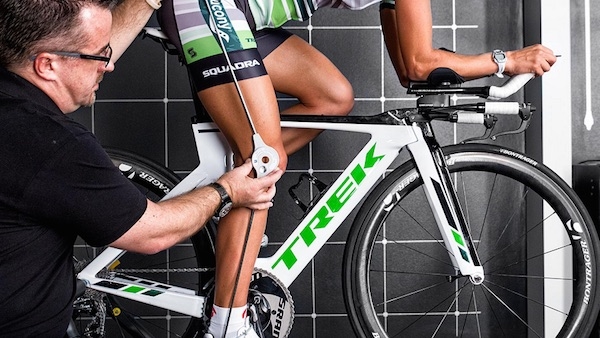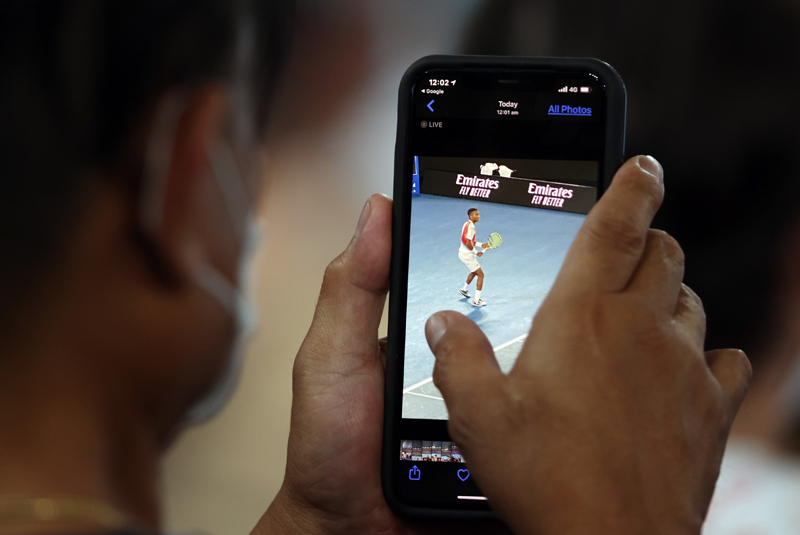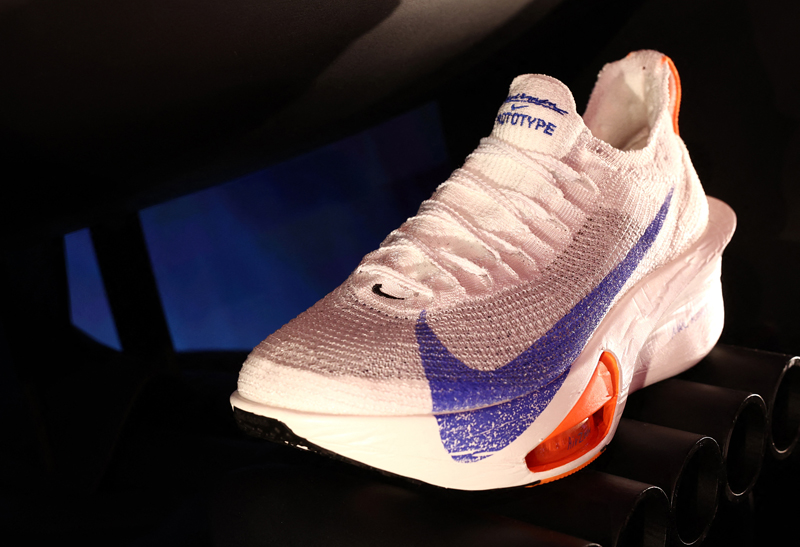You are viewing 1 of your 1 free articles. For unlimited access take a risk-free trial
Cycling technology: just how accurate are power meters?

Many cyclists rely on cycling power meters to determine their training intensity. But just how accurate are they? Andrew Hamilton looks at some recent research on cycling power monitoring
Understanding the concept of training intensity is vital for maximising performance. For example, to improve your sprinting ability over short distances, you need to increase your muscles’ ability to burn carbohydrate very quickly. This means targeting the right intensity during training, and to do this, you need some kind of system of intensity measurement. Without any measurement system, knowing how hard to train and how to vary your training intensity becomes nothing more than guesswork.
Technology and intensity measurement
There are a number of ways of measuring intensity during training or racing. These include heart rate monitoring (HRM), blood lactate measurement and the measurement of power output (watts). All of these are useful in that they generate hard data, which can then be used to compare performances over a period of time. This is hugely useful as it allows athletes to analyse data and adjust and monitor training regimes accordingly.There are also other simpler, ‘technology-free’ methods of measuring training intensity such as perceived rate of exertion (PRE) and ventilation rate. These simpler methods can be surprisingly useful, especially when used in conjunction with data collection. When used as a standalone method however, neither PRE or ventilation rates are sufficiently precise to afford deeper insights into training intensity and the implications for training going forward.
Understanding the power meter
Like all technologies, different modes of training intensity technology have advantages and disadvantages (see panel 1). However, with the falling price of technology, power meters have become very popular in recent years, especially for cyclists. Using a power meter, a cyclist can get instant feedback and measurements by way of a handlebar-mounted computer, which can display exactly how much power a cyclist is producing at any given moment as well as provide an average over time. One important aspect of power measurement is that power produced is unaffected hills, wind, terrain, or other environmental factors.Panel 1: Limitations of technology
While devices such as heart rate monitors, power meters and lactate measuring can be very useful in helping you to monitor and target a certain training intensity, they still have limitations:Heart rate monitor limitations
- Formulae used to predict maximum heart rate may not be accurate for all individuals, leading to inaccuracies in zone determination;
- As fitness levels improve, heart rates at the transitions between training-intensity zones may increase a little too, especially the boundary between zones 1 (pure aerobic) and zone 2 (where lactate accumulation becomes significant).
- Heart rate during exercise can be affected by other factors – for example poor recovery after previous training sessions, or if you’re fighting off a virus, both of which elevate heart rate for any given workload.
Power meter limitations
- While power meters are available for cyclists and indoor (ergo) rowers, no such direct-measurement devices are yet available for runners and swimmers.
- Although becoming cheaper, accurate power meters for cyclists are still expensive.
- As fitness levels change, your sustainable power outputs for a given zone or blood lactate concentration will change considerably, which means that you’ll need to recheck your power output/blood lactate concentration regularly, especially if you’re a relative novice or are returning from a layoff, when quite large fitness changes can occur in a relatively short timescale.
Lactate meter limitations
- With methods requiring the acquisition of blood sample, using lactate monitoring as a guide to intensity is difficult outside of the laboratory. For example, a cyclist riding along while stabbing themselves in the finger to take a blood sample and then inserting a test strip into a machine and awaiting a reading is hardly practical! However, a new generation of monitoring systems based on electromagnetic technology employing the use of sensors worn next to the skin and low-energy microwave radiation to give real-time information on blood lactate concentrations is currently under development. Encouragingly, new research suggests that this kind of non-invasive, wearable technology could offer a relatively accurate means of lactate measurement. One study indicated that this technology is capable of measuring blood lactate with an error of less than 14% across a wide range of concentrations (0-12mmol/L)(1). For a fuller discussion of this technology, readers are directed to the following article: www.researchgate.net/publication/317597927_Noninvasive_In-Situ_Measurement_of_Blood_Lactate_Using_Microwave_Sensors Until this technology becomes widely available however, and because of the above points, the greatest value of using lactate measurements is in combination with other measurements such as power, speed and heart rate. Blood lactate should be seen as an adjunct rather than a prime means of targeting a zone.
Almost all power meters provide a reading in watts, which is generated, by measuring torque somewhere in the drivetrain (pedals, hub, crank, bottom bracket and even the chain – see figure 1) and then multiplying it by the distance over which the force is supplied. As you will recall from your school days, force multiplied by distance provides a measure of energy; to get power (rate of energy production – 1 watt = 1 joule of energy per second) power meter systems also measure cadence – ie how fast the energy is being produced. To summarise therefore, for a cyclist on the move:
Power = Torque (how much force is applied during pedalling) × Cadence (how fast the cyclist pedals)
Figure 1: Drivetrain locations used for power measurement in cyclists

Why use a power meter?
Most training systems only allow you to measure your body’s response to the work. The actual amount of work you perform remains a mystery – or at best an estimate. When power is measured, total work can be measured and rate of work. This gives an absolute benchmark for comparisons both in the past and looking forward. While heart rate and your own perceived exertion is the best way to measure your body's response, power measurement is the best way to measure intensity and work. In particular, having a constant measure of power can help an athlete to:- Establish baseline fitness levels.
- Accurately measure even small fitness gains.
- Accurately measure energy use for nutrition planning.
- Quantify intensity, duration and frequency (instead of guessing).
- Prevent overtraining.
- Pace properly for time trials or other events.
How accurate are power meters?
For a long time, the SRM system was considered the gold standard in power measurement. However, its prohibitive cost meant that it was only routinely available for the most elite cyclists with full team support, or as a measuring tool within research facilities. This probably explains why until recently, few power measurement systems have undergone scientific testing and validation.Part of the challenge for manufacturers of power meters is to ensure that the results obtained on the road match those obtained in the lab. The presence of road vibrations, various bike set ups and different riding positions can all make accuracy on the road harder to achieve than in the lab. The problem for cyclists and coaches is that poor reliability in power output measurement makes the optimisation of a training programme and analysis of data difficult; how much of the change in observed power output is due to fitness gains and losses and how much is due to error in the measurement system?
For the evaluation of the effect of training or detraining with power output measurement, researcher have established that it is important to know the variation due to the technical error of the power meter(2). Specifically, Vanpraagh and his colleagues have suggested that the range of the technical error for workload recorded using ergometers should be within 5%(3). However, when using a power meter to test higher and elite-level cyclists, it is recommended that any technical error is reduced to 2% or less. This is because research shows that elite male cyclists have typical variations of around 1% for time trials lasting in the region of an hour(4).
Tried and tested
At the time of writing, there are some mobile power meters whose validity and reliability have been confirmed in independent peer-reviewed journals. These include:- Garmin’s ‘Vector System’ pedals(5,6)
- PowerTap’s ‘Hub’ wheel hub(2,7)
Good news for power junkies
As mentioned earlier, the SRM power metering system is prohibitively expensive for many cyclists and coaches at an amateur level. PowerTap’s hub system is more affordable but requires a dedicated wheel to be built around it. More recently, Garmin’s Vector pedal system has produced good results at a relatively modest cost. In one study, researchers found that the typical error for power output was 2.9%, while during sprint cycling it was 7.4% for 30-second and 2.7% for 1-second peak power(6). For cadence, the typical error was below 1.0%. The researchers concluded that the accuracy of Garmin’s Vector system provides a valid option for training using power meters.PowerTap P1 pedal system
There’s more good news for cyclists seeking accurate and affordable power metering as a newly published study suggests that PowerTap’s P1 pedal system (figure 2) ticks both boxes(10). In this study, 33 cyclists performed 12 randomised and counterbalanced graded exercise tests at various power outputs (100-500 watts), and at various pedalling cadences 70, 85 and 100rpm. To try and replicate real-world cycling conditions, the cyclists were also asked to pedal in seated and standing positions. Trials were performed using both the gold-standard SRM system and using the PowerTap PP1 pedals.Figure 2: PowerTap P1 pedal system

When the data from the trials was analysed, the PP1 pedals acquitted themselves very well:
- The average errors for power output values were 1.2%, 2.7%, 3.5% for 70, 85 and 100rpm respectively. For an average cadence of 80rpm (typical for most cyclists), this equates to a very respectable and low error rate of around 2%.
- At outputs of 150-350 watts and at 70rpm, there was no significant error (ie the output exactly reflected that recorded by the SRM system).
- The error present was consistent and reliable. The PP1 pedals tended to consistently underestimate the power output (by -2.4 watts -7.3 watts) in a directly proportional manner to the cyclist’s cadence.
Summary and recommendations
There are a large number of cycling power measuring devices on the market at a wide range of price points. These include pedal, hub, crank, chain, chainring and even handlebar-based systems. These systems differ in terms of cost and practicality. However, many of these have not undergone rigorous testing for accuracy. For cyclists seeking scientifically-validated accuracy and reliability in power measurement, the choice is more limited; good results have been obtained with PowerTap’s hub and pedal system, and with Garmin’s Vector pedal system. That’s not to say other systems are unreliable – it’s simply that we don’t have the data to confirm their accuracy. High-performing cyclists who require proven accuracy are therefore recommended to use a validated system.Andrew Hamilton, Sports Performance Bulletin editor
References
- IEEE Transactions on Biomedical Engineering ( Volume: 65, Issue: 3, March 2018)
- International Journal of Sports Medicine 2005. 26, 59-65
- International Journal of Sports Medicine 1992. 13, 27-30
- Sports Medicine 2001. 31, 489-496
- International Journal of Sports Physiology and Performance 2016. 1-26
- International Journal of Sports Medicine 2017. 38(6), 439-446
- Medicine and Science in Sports and Exercise 2004. 36, 1252-1258
- Journal of Strength and Conditioning Research, 2017-Sep-06. [Epub ahead of print]
- International Journal of Sports Physiology and Performance. 2015; 10, 39-45
- Journal of Sports Science and Medicine (2018) 17, 305-311
Newsletter Sign Up
Testimonials
Dr. Alexandra Fandetti-Robin, Back & Body Chiropractic
Elspeth Cowell MSCh DpodM SRCh HCPC reg
William Hunter, Nuffield Health
Newsletter Sign Up
Coaches Testimonials
Dr. Alexandra Fandetti-Robin, Back & Body Chiropractic
Elspeth Cowell MSCh DpodM SRCh HCPC reg
William Hunter, Nuffield Health
Keep up with latest sports science research and apply it to maximize performance
Today you have the chance to join a group of athletes, and sports coaches/trainers who all have something special in common...
They use the latest research to improve performance for themselves and their clients - both athletes and sports teams - with help from global specialists in the fields of sports science, sports medicine and sports psychology.
They do this by reading Sports Performance Bulletin, an easy-to-digest but serious-minded journal dedicated to high performance sports. SPB offers a wealth of information and insight into the latest research, in an easily-accessible and understood format, along with a wealth of practical recommendations.
*includes 3 coaching manuals
Get Inspired
All the latest techniques and approaches
Sports Performance Bulletin helps dedicated endurance athletes improve their performance. Sense-checking the latest sports science research, and sourcing evidence and case studies to support findings, Sports Performance Bulletin turns proven insights into easily digestible practical advice. Supporting athletes, coaches and professionals who wish to ensure their guidance and programmes are kept right up to date and based on credible science.











